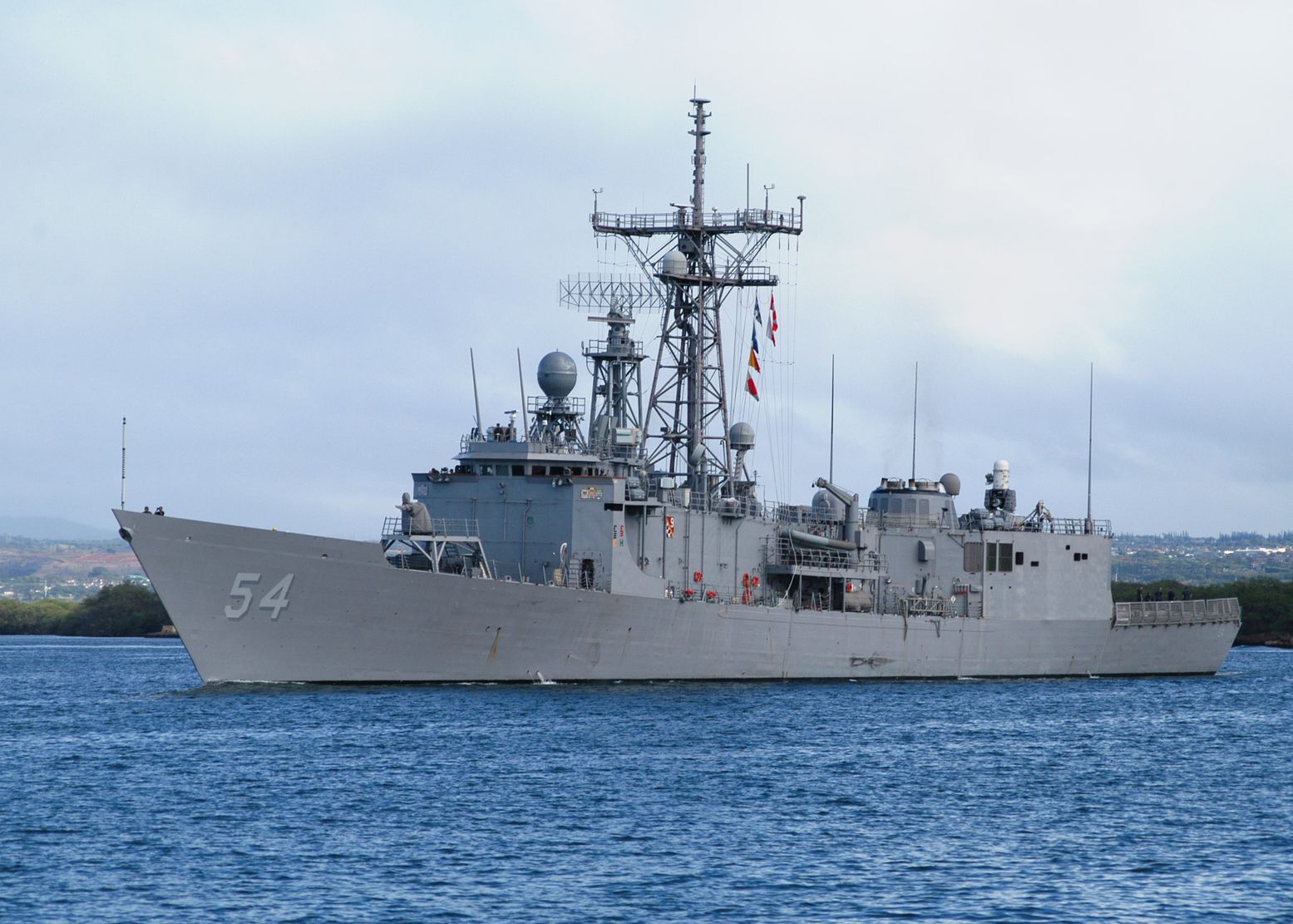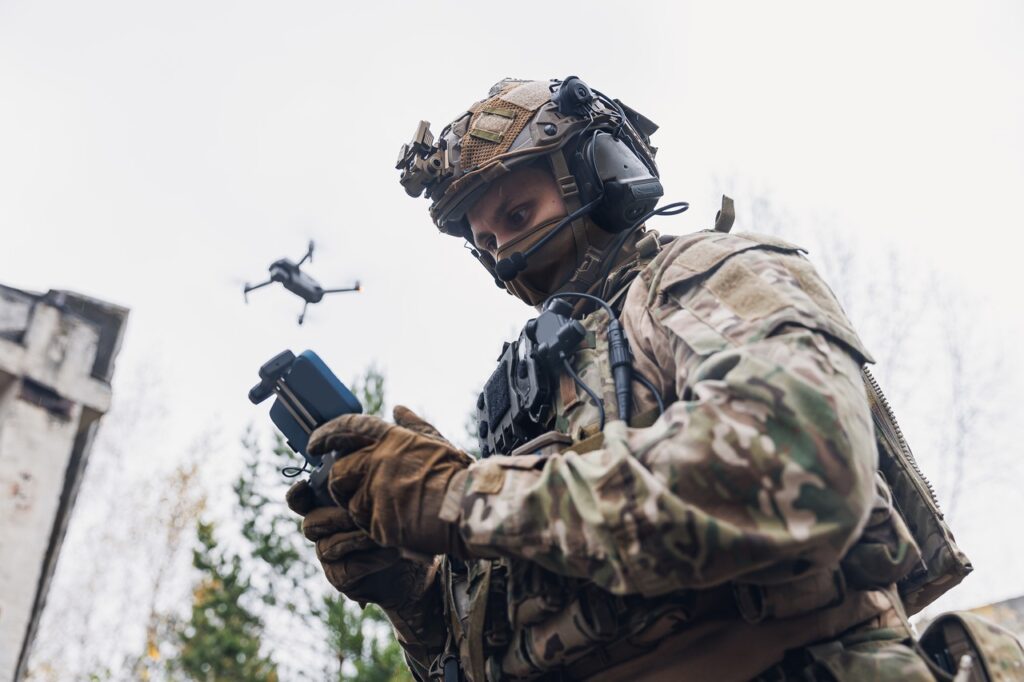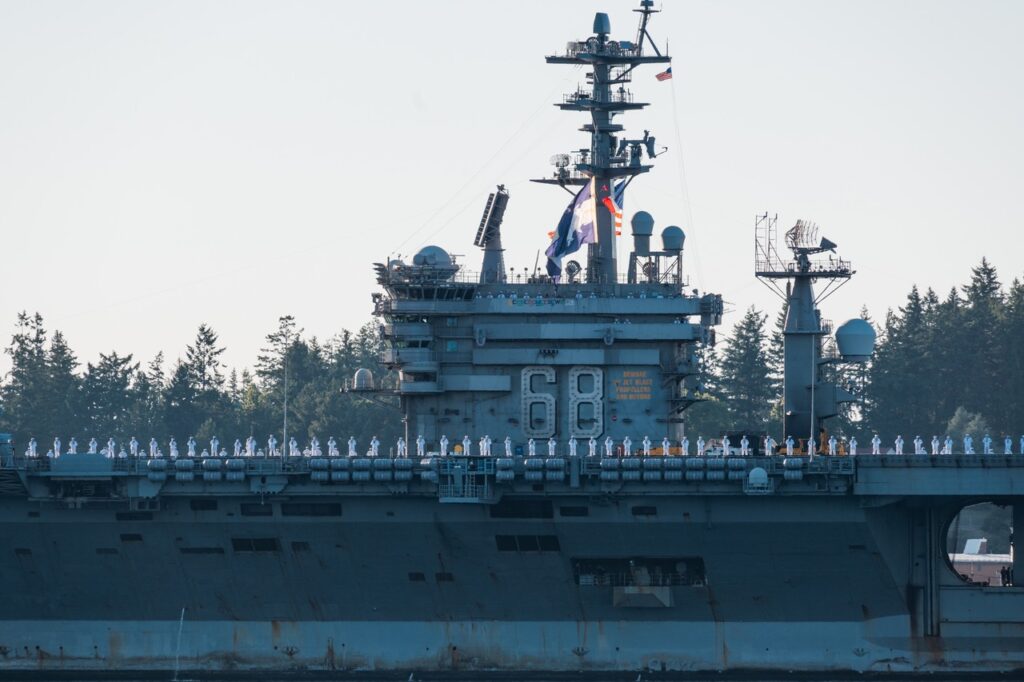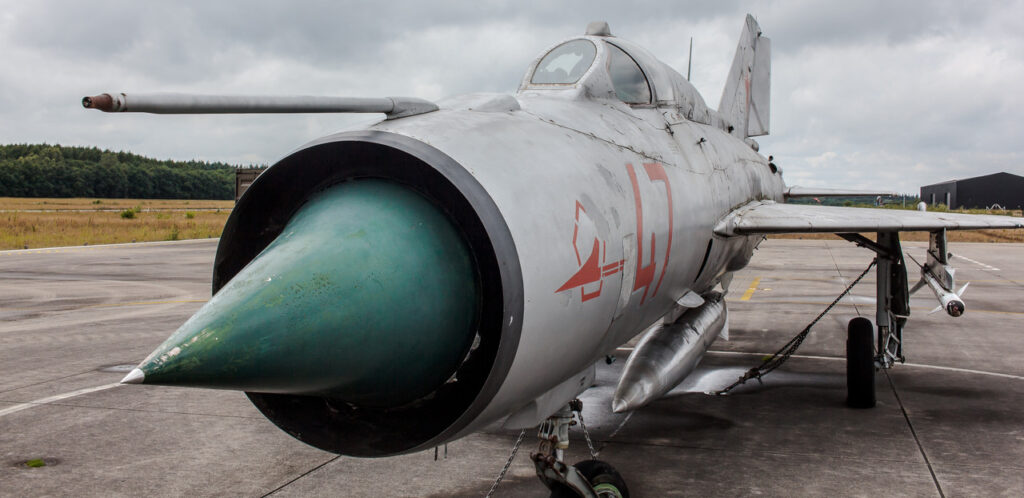
The Navy Wants a New, Advanced Frigate to Fight in Its Wars
This new Guided Missile Frigate platform will “employ unmanned systems to penetrate and dwell in contested environments, operating at greater risk to gain sensor and weapons advantages over the adversary,” the Navy announcement states.
The US Navy is asking industry to prepare “concept design” proposals to build a new combat-capable Frigate able to destroy swarming small boat attacks, operate undersea and aerial drones, support carrier strike groups, conduct disaggregated operations, attack enemies with an over-the-horizon missile and engage in advanced surface and anti-submarine warfare, according to an announcement several months ago from Naval Sea Systems Command.
(This first appeared in December 2017.)
Recommended: Why North Korea Is Destined to Test More ICBMs and Nuclear Weapons
Recommended: 5 Most Powerful Aircraft Carriers, Subs, Bombers and Fighter Aircraft Ever
Recommended: North Korea Has 200,000 Soldiers in Its Special Forces
This new Guided Missile Frigate platform will “employ unmanned systems to penetrate and dwell in contested environments, operating at greater risk to gain sensor and weapons advantages over the adversary,” the Navy announcement states.
The service is also looking for industry to develop advanced sensors, networking technology and command and control for the ship.
“FFG(X) will be capable of establishing a local sensor network using passive onboard sensors, embarked aircraft and elevated/tethered systems and unmanned vehicles to gather information and then act as a gateway to the fleet tactical grid using resilient communications systems and networks,” the Navy announcement states.
Plans for the ship, as specified by the solicitation to industry for concept design ideas, align with elements of the previously released Request for Information; Navy visions for the new ship appear to exceed some of the capabilities initially envisioned for a ship which began the planning stages as merely a more “survivable” variant of the services’ Littoral Combat Ship.
While that sensibility is by no means lost, many sought after characteristics for the Frigate, such and anti-submarine and surface warfare, clearly mirror or expand upon missions performed by the LCS. Anticipated weapons and tactics for new Frigate clearly appear to be a product of fast-evolving, next-generation Navy thinking.
“We are going out to see what is possible,” a NAVSEA official told Scout Warrior.
Findings from a Navy Requirements Evaluation Team, delineated in the RFI to industry earlier this year, offer a unique and unprecedented window into the weapons, technologies and broad mission scope envisioned for the new Navy ship.
While many of the particular weapons systems and design details have yet to be determined, and of course hang in the balance of anticipated industry offerings, the Navy is asking for a ship which can both travel in substantial aggregated combat scenarios such as Carrier Strike Groups and Expeditionary Strike Groups. In addition, it is clear that the service seeks a ship able to function autonomously as well, performing disaggregated or more independent missions.
“Concepts of employment for this type of ship will include integrated operations with area air defense capable destroyers and cruisers as well as independent operations while connected and contributing to the fleet tactical grid. Additionally, this platform must defend against raids of small boats,” the RFI states.
In terms of ship defense systems, electronic warfare technology, offensive weapons and long-range sensors, the Frigate will be engineered with very significant “blue water” combat capability.
While Navy officials do not fully specify details of new technologies now under consideration, they have said the new examination could lead to a different kind of hull design, as well as new offensive and defensive weapons.
The prospect of stronger air defenses and enhanced survivability initiatives for the ship open the door to a wide range of offensive and defensive weaponry, such as emerging low-cost laser weapons able to incinerate incoming enemy attacks or launch offensive strikes.
The RFI states the “FFG(X) will perform its missions in complex electronic warfare and anti-ship missile threat environments, and, therefore, when available from other Navy efforts, will integrate hard-kill with advanced soft-kill systems at the combat systems level to enable the most effective offense and defense management of onboard weapons and decoy inventories.”
Existing plans for the Frigate have considered “space armor” configurations, a method of segmenting and strengthening ship armor in specified segments to enable the ship to continue operations in the event that one area is damaged by enemy attack. Discussions for Frigate technologies have included plans for ship defense technologies such as SeaRAM.
The Navy already plans for the new Frigate to be integrated with anti-submarine surface warfare technologies including sonar, an over-the-horizon missile and surface-to-surface weapons, which could include a 30mm gun and closer-in missiles such as the HELLFIRE.
Some of the over-the-horizon missiles now being considered by the Navy include the Naval Strike Missile by Kongsberg-Raytheon and the Long-Range Anti-Ship missile (LRASM) made by Lockheed and the Pentagon’s research arm, DARPA. The new ship may also have seven 11-meter Rigid Inflatable Boats for short combat or expeditionary missions such as visiting, searching and boarding other ships. (To Read Scout Warrior’s Prior Report Analyzing Frigate Weapons Options CLICK HERE)
Anti-submarine technologies planned for the ship are expected to include a multi-function towed array sonar, variable depth sonar to detect submarines and sensors combined with a submarine hunting MH-60R helicopter.
It is not yet known whether the Frigate will be engineered with Vertical Launch Systems (VLS) to fire larger, longer-range missiles such as a Tomahawk or Standard Missile 6.
However, that could be a possibility depending upon emerging Navy requirements for weapons on the ship, developers have said. It is certainly conceivable that these kinds of considerations could inform ongoing deliberations. The LCS hull is not engineered to accommodate VLS. However, should a different hull form be considered for the Frigate, the prospect of VLS or other kinds of ship-launched weapons could emerge.
In addition, the ship will be configured in what’s called a “modular” fashion, meaning it will be engineered to accept and integrate new technologies and weapons as they emerge such as lasers and rail guns. It certainly seems realistic that a new, even more survivable Frigate might be engineered with an additional capacity for on-board electrical power such that it can accommodate stronger laser weapons as they become available.
Overall, initial requirements concepts for the new ship appear to mirror the Navy’s much-discussed “distributed lethality” strategy. This strategic approach, in development for several years now, emphasizes the need to more fully arm the fleet with offensive and defensive weapons and disperse forces as needed to respond to fast-emerging near-peer threats.
Navy Frigate – 2023
The Frigate is slated for delivery to the Navy by 2023; the platform is an outgrowth of the Navy’s Littoral Combat Ship effort which originally planned to build 52 shallow-water multi-mission ships equipped with interchangeable groups of technologies called “mission packages” for mine countermeasures, anti-submarine technologies and surface warfare systems.
However, lawmakers, analysts and some members of the Navy argued years ago that the LCS was not “survivable” enough. Although the LCS speed of 40-knots is by itself regarded as a survivability-enhancing attribute, critics argued the ship would be far too vulnerable to enemy attack.
There was a chorus of concern from Pentagon leaders, members of Congress, analysts and some Navy officials about whether the existing LCS will be “survivable” enough to withstand and prevail in large-scale surface combat. Could the ship continue to function if struck by enemy fire? Does it have the needed long-range offensive strike capability?
The concern, ultimately echoed by then Secretary of Defense Chuck Hagel, was that the ship did not have enough weapons, armor fortifications and what’s called “blue water” combat capability to challenge near-peer adversaries.
“LCS as designed is a focused mission ship. It can do one specific mission at a time and the combat capability to do that mission is provided by the mission packages,” Hagel said several years ago. “We are going to take a modified LCS and take that as the baseline and then add changes or modifications to improve its lethality and survivability.”
The LCS, which is currently in service with the Navy, is credited for its speed, maneuverability and shallow draft which enables it to access shallow water ports larger ships are unable to reach. The LCS ships in service this far have performed quite well, Navy officials explained.
The original initiative to engineer a more survivable and lethal LCS variant emerged out of a multi-month effort directed by Hagel to form an entity called the Small Surface Combatant Task Force.
Image: Wikimedia.


